Even if you spend hours thinking and researching, coming up with robust programmatic SEO ideas is not at all easy.
Why?
Because there is no fixed process to find pSEO-friendly keyword ideas. But you can just start looking around even without a proper starting point and get some interesting ideas.
I struggle with the same but have got my way around after spending a lot of time doing this.
In this blog post, I will explain some unique approaches to finding programmatic SEO ideas and then also provide some validated ideas that you can directly pursue.
Coming up with pSEO ideas
The “technical aspects” of programmatic SEO are not the most challenging and important parts of the process; the “non-technical aspects” are the most critical for success.
And by “non-technical aspects”, I mean, keyword research, page template creation, data collection and preparation, etc.
1. Start with the website
If you are doing programmatic SEO for an existing website, there can’t be a better way than starting the process from the website itself. Start visiting all the different sections of the website one by one and note down every word, phrase, feature, area, use case, etc. in a document.
For example, if I am trying to find pSEO ideas for a note-taking website then my brainstorming notes would look something like this:
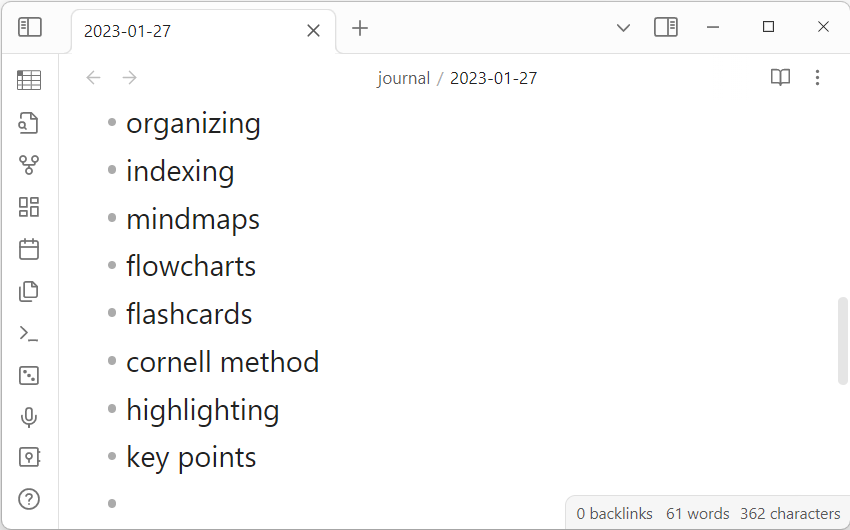
And after you’ve noted down all the related terms, it’s time to start googling each term with a bit of modification. You can use the * (asterisk) operator before, after, or in the middle of the terms to get Google auto-suggestions about the topic.
Furthermore, you can also use prepositions like on, for, of, etc. to modify the terms and get more and better suggestions.
For example, I searched for the term note taking apps and simply modified it by adding for followed by * after it and got some interesting suggestions.
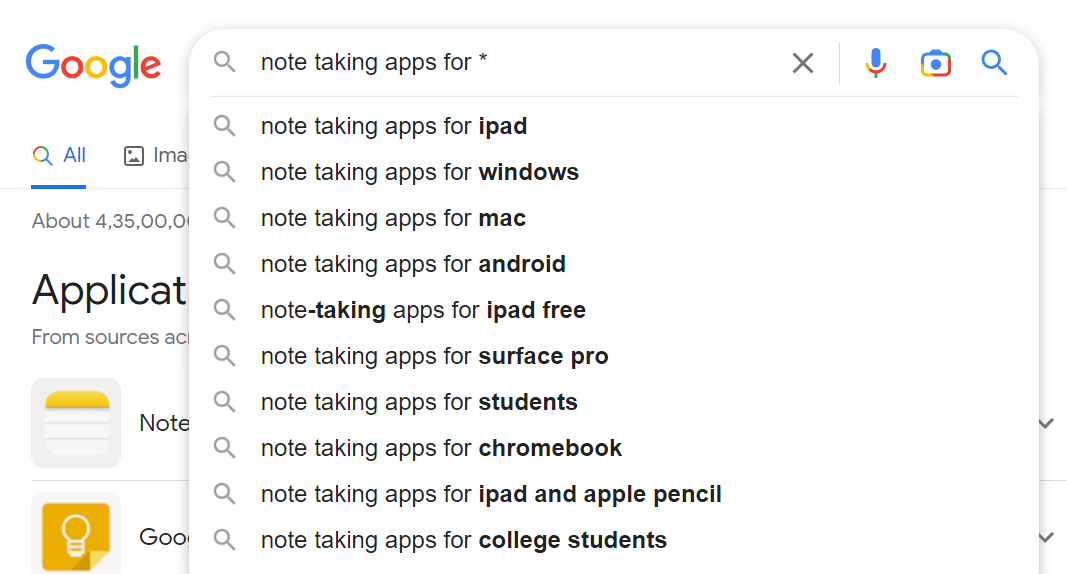
And if you notice, we have got a programmatic SEO idea: note taking apps for {someone|device}
Repeat the similar process for all the brainstormed terms, and note down any programmatic SEO-friendly ideas that you come across. And once you’re done with the process, use tools like SEMrush to validate your keyword ideas if they are worth pursuing or not.
SEMrush also supports the
*(asterisk) when you research by using the Keyword Magic Tool.
2. Explore the niche and sub-niches
If you are starting a new website in a completely new niche, the initial process of coming up with programmatic SEO ideas can be a little different.
For example, if the content site that I am planning to start is in the “pet” niche, then here’s how I would approach it:
- Find other blogs in the pet niche (at least 15–20 blogs)
- Visit each blog one by one and scroll through different areas
- Note down all the sub-niches and sub-topics that are on the sites
And once I have all the topics, I start by googling all terms one-by-one and noting down all the potential keywords that I come across. And then I’d validate all the pSEO ideas that got found through the process, as explained in the previous section #1.
While doing the research, you have to keep looking for keywords that can be modified, something like
can dogs eat {food}. I have written another blog post that talks deeply about finding pSEO head terms that might be helpful for you.
Interesting pSEO ideas
You learned how to approach finding the ideas in the previous section, here are a few programmatic SEO ideas that you can directly use in your project(s).
1. For SaaS businesses
SaaS businesses have one of the most interesting use cases of programmatic SEO to drive tons of highly transactional traffic to their website.
Some programmatic SEO ideas for SaaS businesses are:
- Create use-cases pages in bulk, for example,
how to use YourSaaS for {something} - Create alternatives pages including your competitors, for example,
best alternatives of {YourCompetitor} - Create comparison pages including your competitors, for example,
YourSaaS vs {YourCompetitor} - Create small tools as engineering as marketing, for example,
free online {ToolName}
I am sure you will get a fresh perspective from these ideas.
2. For content sites
I have personal experience with using the techniques of programmatic SEO for my content sites. At the time of writing this, I have been using the technique for more than a year and it’s coming out great, as illustrated by the below screenshot.
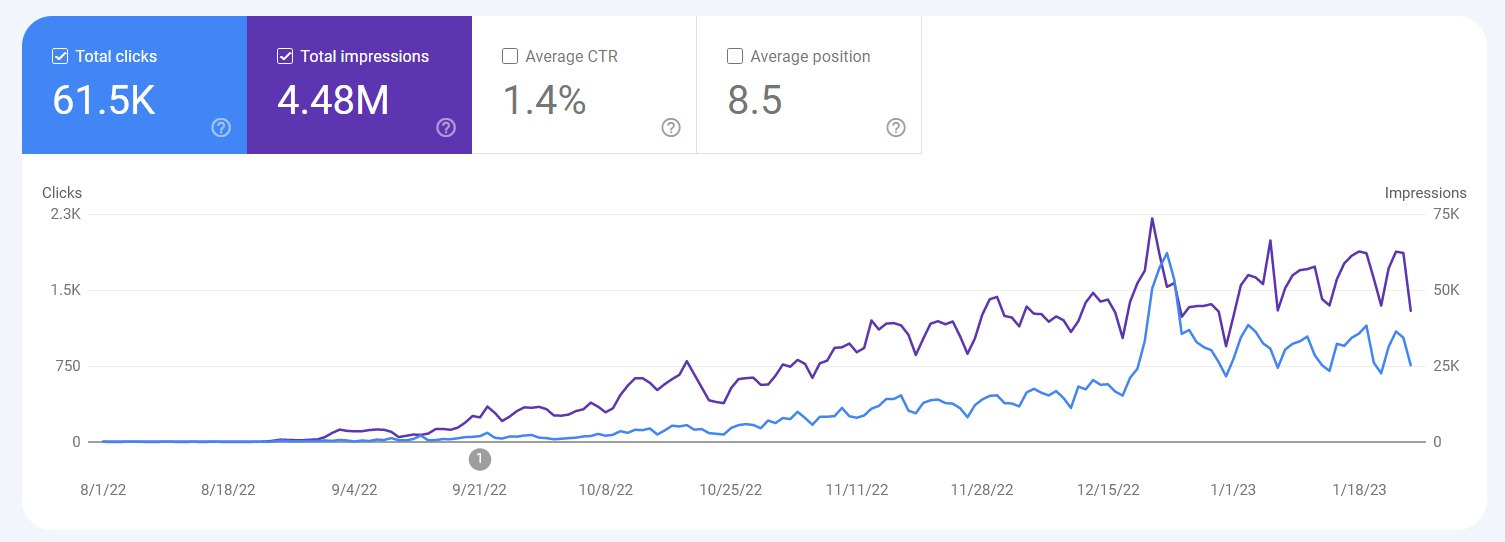
The spectrum and possibilities with programmatic SEO are endless, and you can find a ton of them by using the methods that I talked about above. However, here are some interesting pSEO ideas for content sites:
- Create product comparison pages, for example,
{item 1} vs {item 2}orcomparison between {item 1} and {item 2} - Create differences between pages, for example,
difference between {item 1} and {item 2} - Create clusters around sub-topics in your niche, for example, for a fish site topics like
care guides for {fish species}orcan {fish 1} live with {fish 2}
You get the idea, right?
There is absolutely no limitation, you just start looking around and you will find several programmatic SEO ideas that you can pursue.
The other day, I found a random idea while scrolling through my Twitter feeds – calculate {something} in Google Sheets and the {something} here can easily be replaced by words like sum, average, mean, median, standard deviation, etc.
Final words
Once you have found some pSEO ideas for your website, you’ve successfully completed 50% of the work. Now, you just have to create a good page template and then set up the automation to create multiple pages.
In case you are looking for a detailed tutorial, I have written a thorough guide on programmatic SEO that you can refer to.
And if you have any related queries, kindly feel free to let me know in the comments.





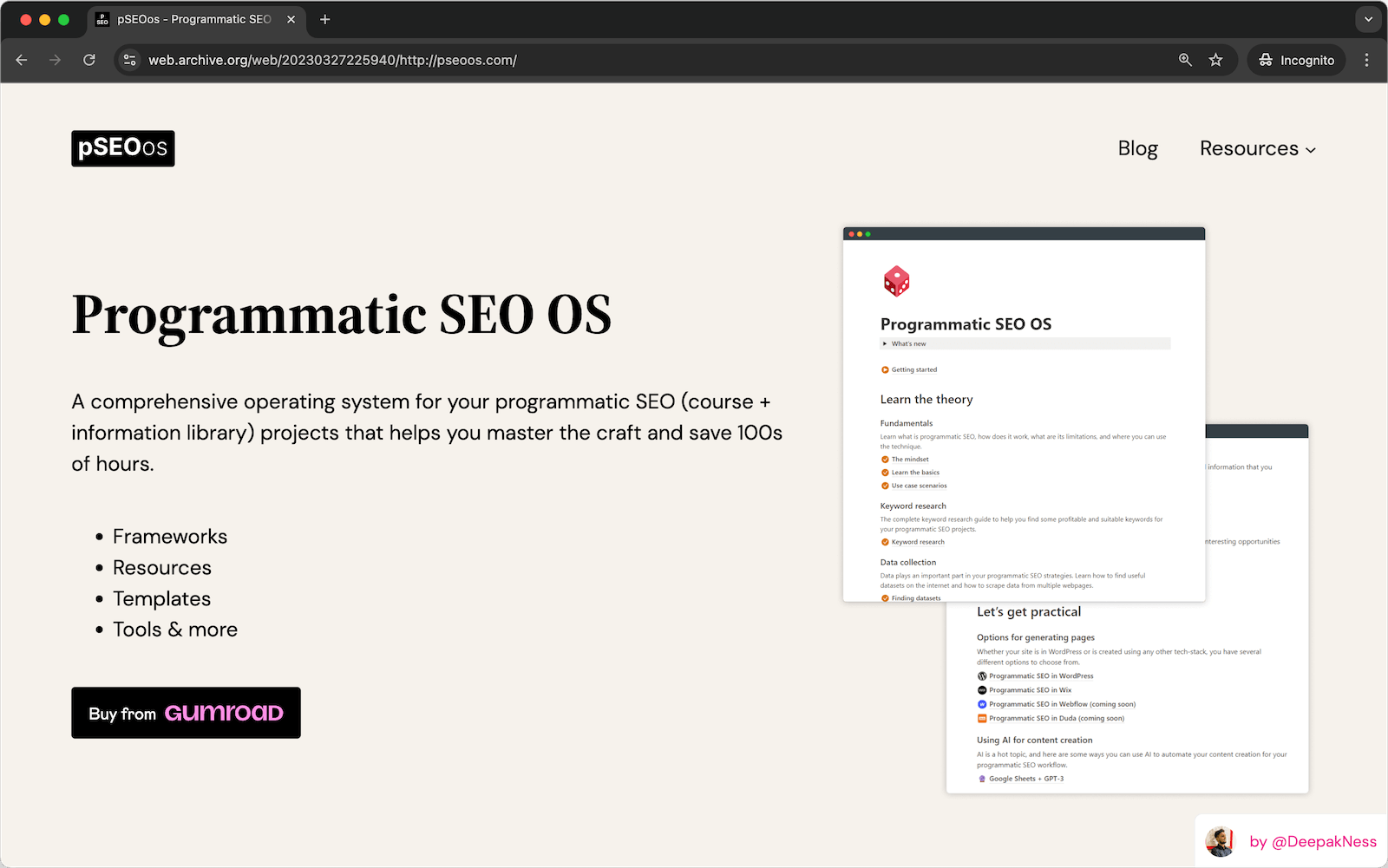
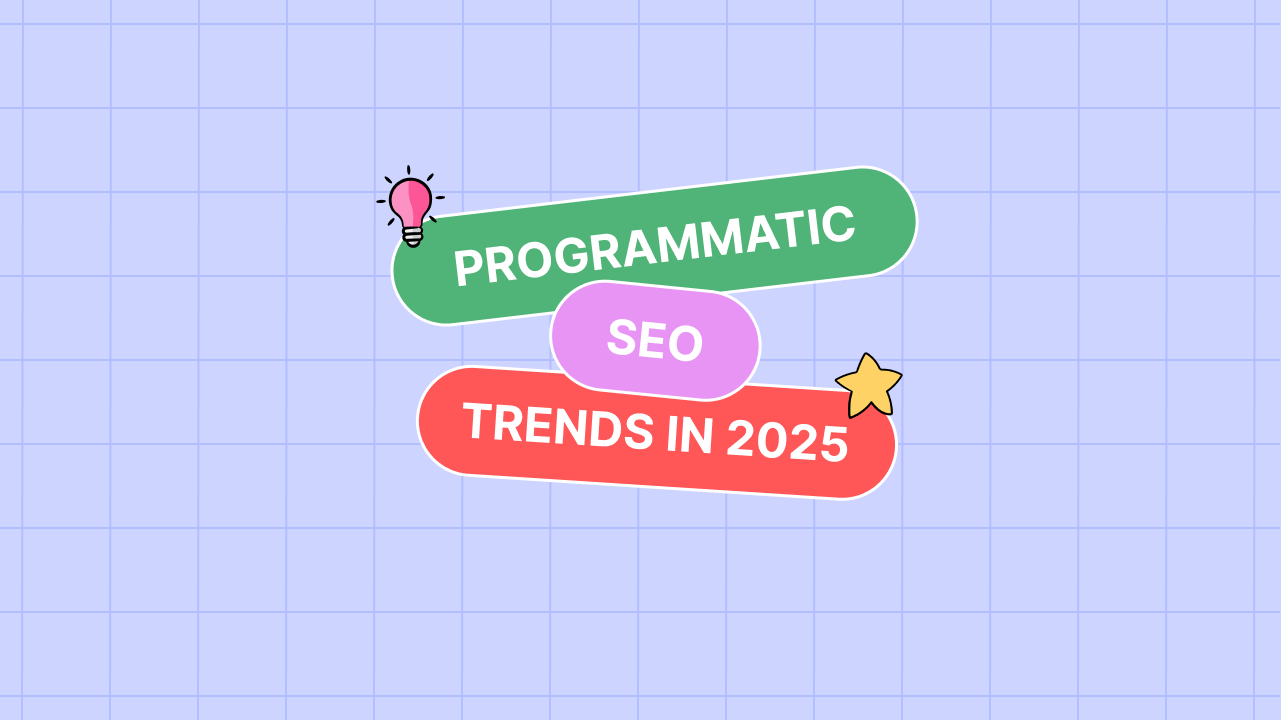
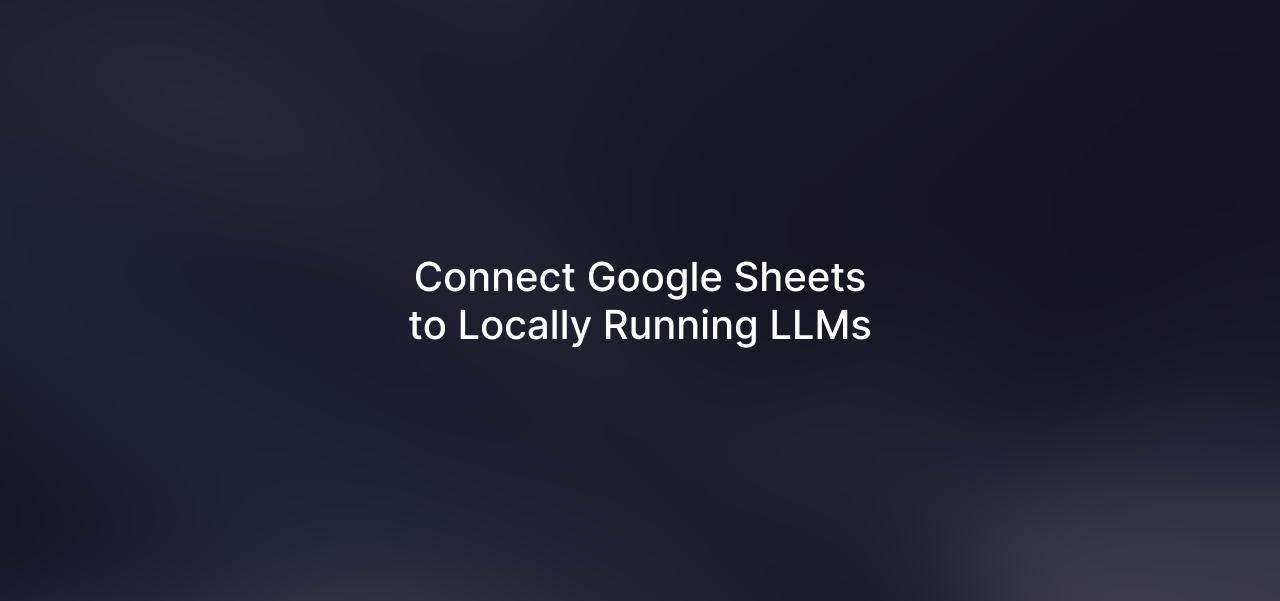
Leave a Reply